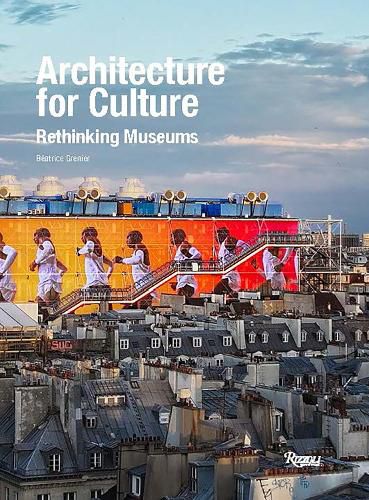Readings Newsletter
Become a Readings Member to make your shopping experience even easier.
Sign in or sign up for free!
You’re not far away from qualifying for FREE standard shipping within Australia
You’ve qualified for FREE standard shipping within Australia
The cart is loading…






Architects have been reformulating the experience of the museum and art itself, transforming the museum's definition: The Louvre Abu Dhabi as a replica of a museum-city, inspired by Paris; the Guggenheim Museum and the Centre Pompidou as drive-through museums, shaped in an age when the car is protagonist; the new wing of the American Museum of Natural History in New York reimagines the institution with organic forms, as a bridge over the philosophical divide between culture and nature; the Hangzhou National Archives of Publications and Culture is built as an imitation of an art piece, to be an immersive experience of history and culture; the upcoming Cartier Foundation in front of the Louvre in Paris with its mobile giant platforms expresses the needs for dynamic architecture to be the site of the invention of culture. Through this analysis, the museum of the twenty first century emerges as the most important site of experimentation for architecture and art. The essential role of the museum as an enabler of a different kind of encyclopedia, as a necessary place in our cities in its potential to call into question the dichotomy between the urban and the wild, or again as withholding a democratization potential in including new forms of technology as forms of knowledge and culture is catalyzed through architecture. Only through the museum we can understand what art is and what its growing role in our future urban environment might be.
$9.00 standard shipping within Australia
FREE standard shipping within Australia for orders over $100.00
Express & International shipping calculated at checkout
Architects have been reformulating the experience of the museum and art itself, transforming the museum's definition: The Louvre Abu Dhabi as a replica of a museum-city, inspired by Paris; the Guggenheim Museum and the Centre Pompidou as drive-through museums, shaped in an age when the car is protagonist; the new wing of the American Museum of Natural History in New York reimagines the institution with organic forms, as a bridge over the philosophical divide between culture and nature; the Hangzhou National Archives of Publications and Culture is built as an imitation of an art piece, to be an immersive experience of history and culture; the upcoming Cartier Foundation in front of the Louvre in Paris with its mobile giant platforms expresses the needs for dynamic architecture to be the site of the invention of culture. Through this analysis, the museum of the twenty first century emerges as the most important site of experimentation for architecture and art. The essential role of the museum as an enabler of a different kind of encyclopedia, as a necessary place in our cities in its potential to call into question the dichotomy between the urban and the wild, or again as withholding a democratization potential in including new forms of technology as forms of knowledge and culture is catalyzed through architecture. Only through the museum we can understand what art is and what its growing role in our future urban environment might be.